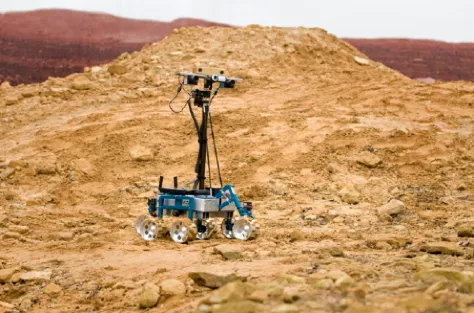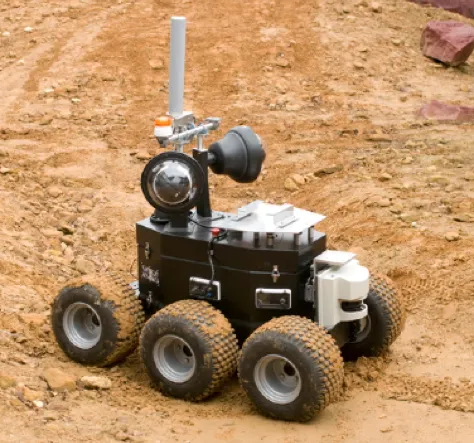
Seeker-enabled rover Indie, built by SciSys, gets a run-out on a simulated Martian landscape at RAL
Credit: Stephen Kill/STFC
At a conference held at the Rutherford Appleton Laboratory (RAL)yesterday, scientists have unveiled RoboVolc and Indie, two prototype Martian rovers that feature autonomous navigation technology called Seeker. Seeker has been developed by an international team of scientists working under the auspices of the ESA's StarTiger initiative, set up to tackle "space-related challenges".
Current rovers have to be programmed and controlled by scientists on Earth, which is less than ideal given that control signals take at least 30 minutes to reach the Red Planet. The new rovers, however, will have the ability to detect and identify sites of potential scientific interest, detect and avoid hazards, and navigate their way back to previously visited sites – all without any human input whatsoever, and without relying on satellite communications.
This is also true of NASA's new Perseverance rover, which will be seeking out signs of ancient life when it lands on Mars on 18 February 2021.
Project director Kim Ward of RAL Space said: "Seeker's ability to work autonomously in hostile terrain will be crucial to our understanding of our planetary neighbour."

RoboVolc from BAe is another prototype rover equipped with the Seeker autonomous navigation technology
Credit:Stephen Kill/STFC
The rovers have been built by a team of scientists from the UK's RAL Space, SciSys, BAe Systems and Roke Manor Research, as well as Canada's MDA Space & Robotics and France's LAAS. Experts in disciplines as diverse as artificial intelligence, electronic sensing and image processing have all had a part to play in their development.
At the moment the rovers are still at the prototype/concept stage, but the developers are hoping that they may one day have a role to play in a real-life Mars mission. They could also prove useful for exploring remote or hostile environments here on Earth.
